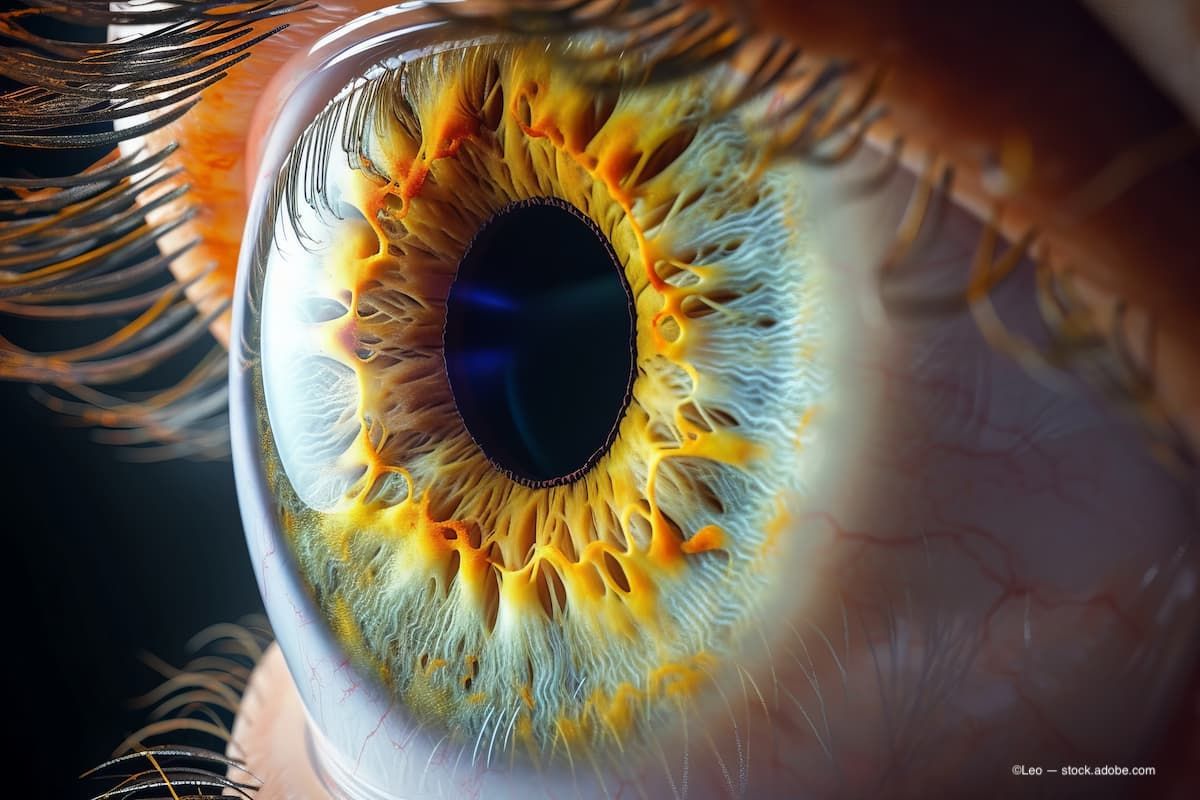- COVID-19
- Biosimilars
- Cataract Therapeutics
- DME
- Gene Therapy
- Workplace
- Ptosis
- Optic Relief
- Imaging
- Geographic Atrophy
- AMD
- Presbyopia
- Ocular Surface Disease
- Practice Management
- Pediatrics
- Surgery
- Therapeutics
- Optometry
- Retina
- Cataract
- Pharmacy
- IOL
- Dry Eye
- Understanding Antibiotic Resistance
- Refractive
- Cornea
- Glaucoma
- OCT
- Ocular Allergy
- Clinical Diagnosis
- Technology
Rare Disease Day: Ocugen completes dosing of subjects with Stargardt Disease in Cohort 1 in Phase 1/2 trial of OCU410ST
Stargardt disease is an orphan blindness disease that affects approximately 35,000 people in the United States.
(Image Credit: AdobeStock/Leo)

Rare Disease Day unites patients across thousands of rare conditions, including in ophthalmology, with a goal of connecting to a broader audience. A rare disease overall, Stargardt disease is a genetic eye disorder that causes retinal degeneration and vision loss, and is the most common form of inherited macular degeneration.
Stargardt disease is an orphan blindness disease that affects approximately 35,000 people in the United States. The progressive vision loss associated with Stargardt disease is caused by the degeneration of photoreceptor cells in the central portion of the retina called the macula.1
Ocugen Inc. recently announced that dosing is complete in the first cohort of its Phase 1/2 GARDian clinical trial for OCU410ST (AAV5-hRORA) —a modifier gene therapy candidate being developed for Stargardt disease.
“This is an important clinical milestone for our first-in-class, potential one-time therapy for the treatment of Stargardt disease,” Arun Upadhyay, PhD, chief scientific officer and head of R&D at Ocugen, said in a company news release. “Although Stargardt is one of the most common inherited retinal diseases, there remains no treatment option to address this condition. OCU410ST provides hope to these patients who may eventually lose their vision.”
According to the company, as many as 10 leading retinal surgery centers across the United States are participating in the GARDian clinical trial. In the first cohort, 3 subjects received a 200L single subretinal administration of the low dose (3.75x1010 vg/mL) of OCU410ST.
Benjamin Bakall, MD, PhD, director of Clinical Research at Associated Retina Consultants and Clinical Assistant Professor at the University of Arizona, College of Medicine in Phoenix, said he was pleased to participate in this study and to offer a novel modifier gene therapy option to his patients.
“Until now, we have not had any effective treatment that can prevent the vision loss in patients with Stargardt disease,” he said. “Now, I believe that this approach can offer a new therapeutic option to address the disease itself.”
According to the company, the GARDian clinical trial will assess the safety of unilateral subretinal administration of OCU410ST in subjects with Stargardt disease and will be conducted in 2 phases. Phase 1 is a multicenter, open-label, dose-ranging study consisting of 3 dose levels [low dose (3.75×10E10vg/mL), medium dose (7.5×10E10vg/mL), and high dose (2.25×10E11vg/mL)].
Moreover, the company noted that Phase 2 is a randomized, outcome accessor-blinded, dose-expansion study in which adult and pediatric subjects will be randomized in a 1:1:1 ratio to either 1 of 2 OCU410ST dose groups or to an untreated group. The Company will continue to provide clinical updates.
About OCU410ST
OCU410ST utilizes an AAV delivery platform for the retinal delivery of the RORA(RAR Related Orphan Receptor A) gene. It represents Ocugen’s modifier gene therapy approach, which is based on Nuclear Hormone Receptor (NHR)RORAthat regulates pathway links to Stargardt disease such as lipofuscin formation, oxidative stress, complement formation, inflammation, and cell survival networks.1
Additional trials
In December 2023, Ocugen Inc announced the first patient has been dosed in the ArMaDa Phase 1/2 clinical trial of OCU410 (AAV-RORA), a modifier gene therapy product candidate being developed for dry AMD (dAMD).2
OCU410 is a potential curative therapy with a single subretinal injection that targets multiple pathways causing dAMD, including lipid metabolism, inflammation, oxidative stress, and complement activation. Currently, the other therapeutic options available target only complement activation and require approximately 6-12 intravitreal injections annually.
